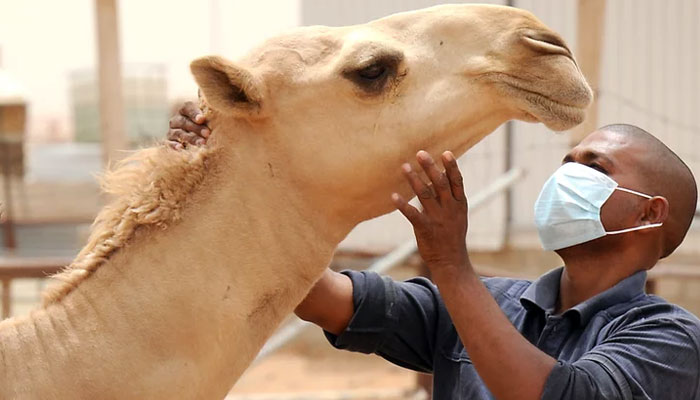Humans give more viruses to animals than they give us, study finds
Wild animals in particular were much more likely to experience human-to-animal transmission than the other way around.
WASHINGTON: Some of the deadliest diseases to stalk humankind have come from pathogens that jumped from animals to people. The virus that causes AIDS, for example, crossed over from chimpanzees. And many experts believe the virus that caused the Covid-19 pandemic flowed from bats.
But, as a new study shows, this exchange has not been a one-way street. An analysis of all the publicly available viral genome sequences yielded a surprising result: humans give more viruses - about twice as many - to animals than they give to us.
The researchers looked at nearly 12 million virus genomes and detected almost 3,000 instances of viruses jumping from one species to another. Of those, 79 percent involved a virus going from one animal species to another animal species. The remaining 21 percent involved humans. Of those, 64 percent were human-to-animal transmissions, known as anthroponosis, and 36 percent were animal-to-human transmissions, called zoonosis.
The animals affected by anthroponosis included pets such as cats and dogs, domesticated animals such as pigs, horses and cattle, birds such as chickens and ducks, primates such as chimpanzees, gorillas and howler monkeys, and other wild animals such as raccoons, the black-tufted marmoset and the African soft-furred mouse.
Wild animals in particular were much more likely to experience human-to-animal transmission than the other way around.
-
 How You Can Protect Yourself From Alzheimer's At The Comfort Of Your Home
How You Can Protect Yourself From Alzheimer's At The Comfort Of Your Home -
 Sydney Sweeney, Scooter Braun Romance Hits Trouble
Sydney Sweeney, Scooter Braun Romance Hits Trouble -
 Microsoft AI Chief Questions How Safe Current AI Really Is
Microsoft AI Chief Questions How Safe Current AI Really Is -
 Princess Diana's Secret Regret About Her Sons William And Harry Revealed
Princess Diana's Secret Regret About Her Sons William And Harry Revealed -
 Why Is Instagram Sending Password Reset Emails To Users? Here’s Everything To Know
Why Is Instagram Sending Password Reset Emails To Users? Here’s Everything To Know -
 Elon Musk To Introduce New Open-source Algorithm For ‘X’
Elon Musk To Introduce New Open-source Algorithm For ‘X’ -
 Jennifer Lawrence Faces Backlash For Rehoming Dog After Incident With Son
Jennifer Lawrence Faces Backlash For Rehoming Dog After Incident With Son -
 Prince William Gears Up For A Slap To The Face As Prince Harry Awaits Second Win
Prince William Gears Up For A Slap To The Face As Prince Harry Awaits Second Win -
 ‘High School Musical’ Alum Matt Prokop Arrested On Child Pornography Charges
‘High School Musical’ Alum Matt Prokop Arrested On Child Pornography Charges -
 Paris Hilton Gets Candid About Britney Spears' Wellbeing
Paris Hilton Gets Candid About Britney Spears' Wellbeing -
 Prince Harry’s Return To The UK With Archie, Lilibet: ‘Will Meghan Finally Pull The Trigger?’
Prince Harry’s Return To The UK With Archie, Lilibet: ‘Will Meghan Finally Pull The Trigger?’ -
 Naomi Watts Gets Real About Impact Of Menopause On Her Eyes
Naomi Watts Gets Real About Impact Of Menopause On Her Eyes -
 Fears Mount Against Prince Harry: ‘He’ll Record So That He Can Use Every Word’
Fears Mount Against Prince Harry: ‘He’ll Record So That He Can Use Every Word’ -
 Kristen Stewart Gets Honest About Future Plans
Kristen Stewart Gets Honest About Future Plans -
 Andrew Mountbatten-Windsor Under Fresh Scrutiny Over Royal Lodge
Andrew Mountbatten-Windsor Under Fresh Scrutiny Over Royal Lodge -
 'The West Wing' Actor Timothy Busfield Faces Arrest Warrant Over Allegations Of Child Sexual Abuse
'The West Wing' Actor Timothy Busfield Faces Arrest Warrant Over Allegations Of Child Sexual Abuse




